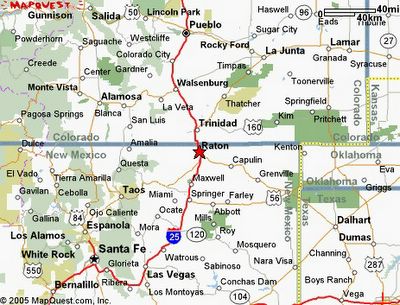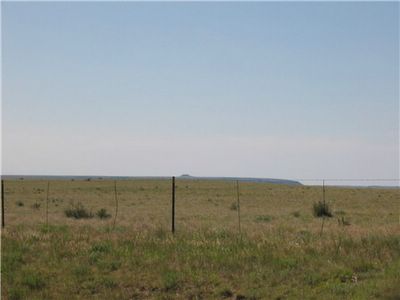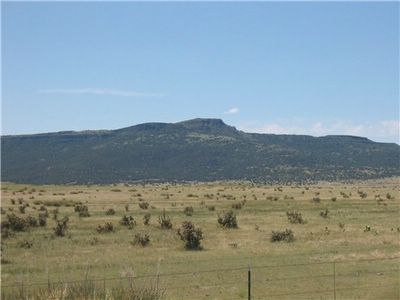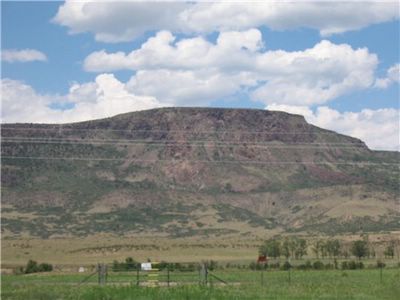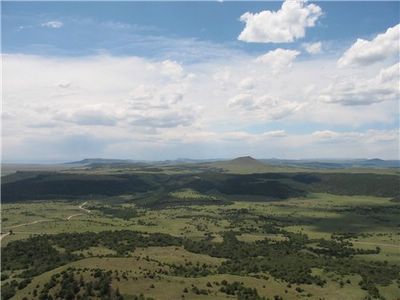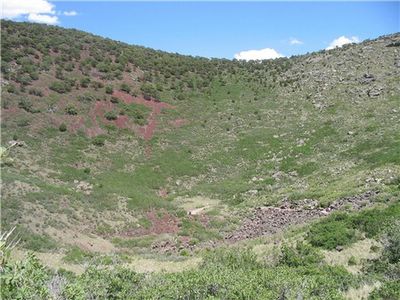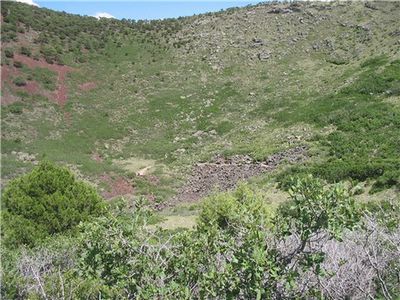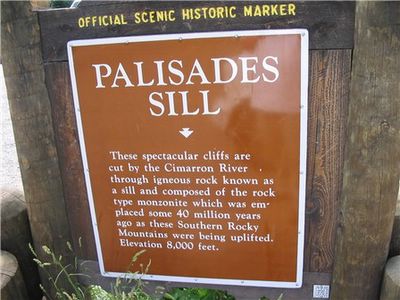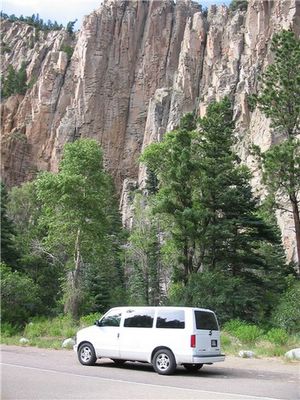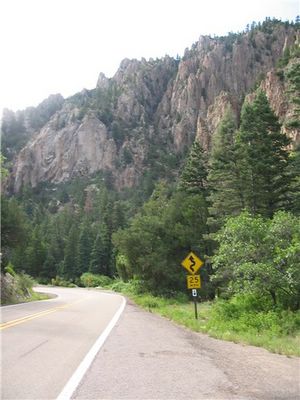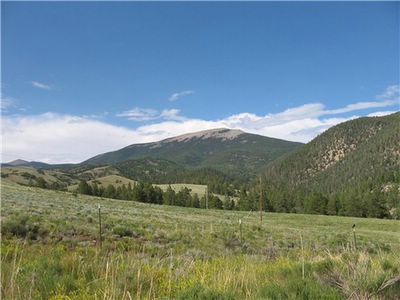The Raton-Clayton Field extends from Springer, New Mexico, up to Trinidad, Colorado and over to just south of Kim, Colorado. Clayton, New Mexico is on route 56 at the intersection near the Texas border. Capulin Mountain is almost in the middle of this field just outside Capulin (south east of Raton). The Palisades is above the first "i" in Miami and Eagle's nest is just above the "s" in Taos. Toas is to the southwest of Raton.

